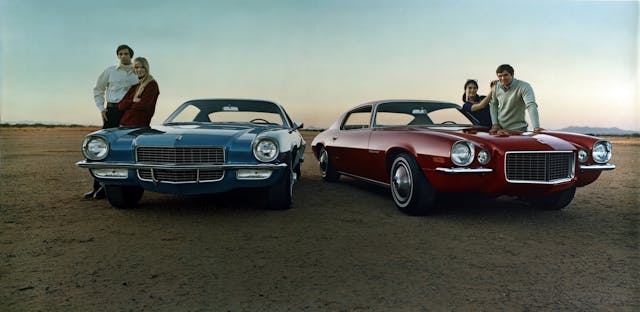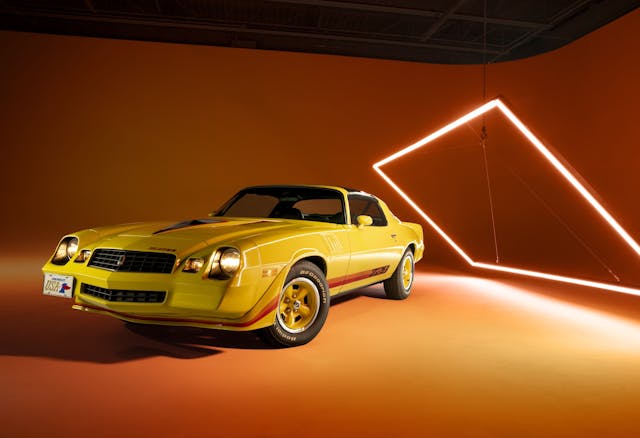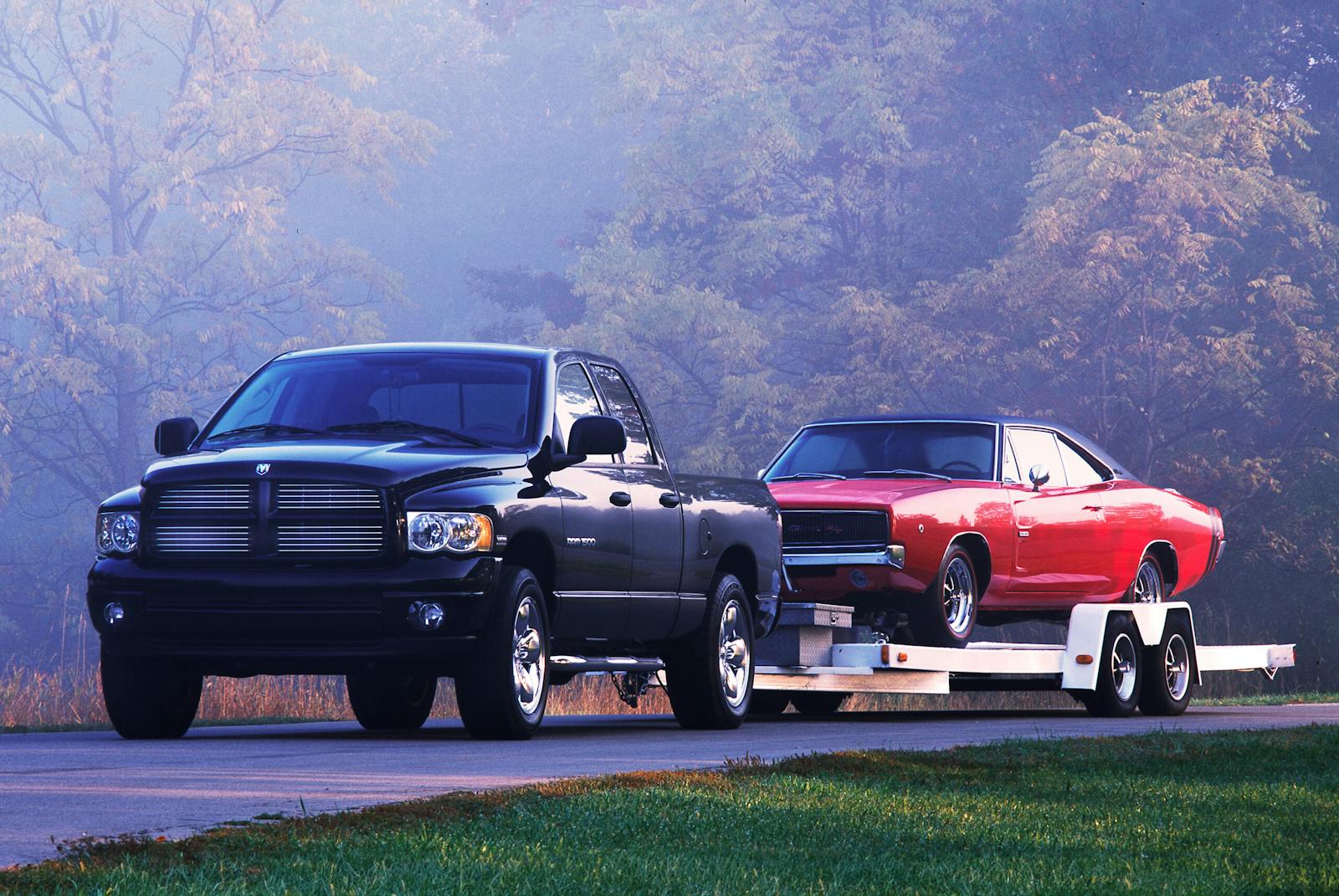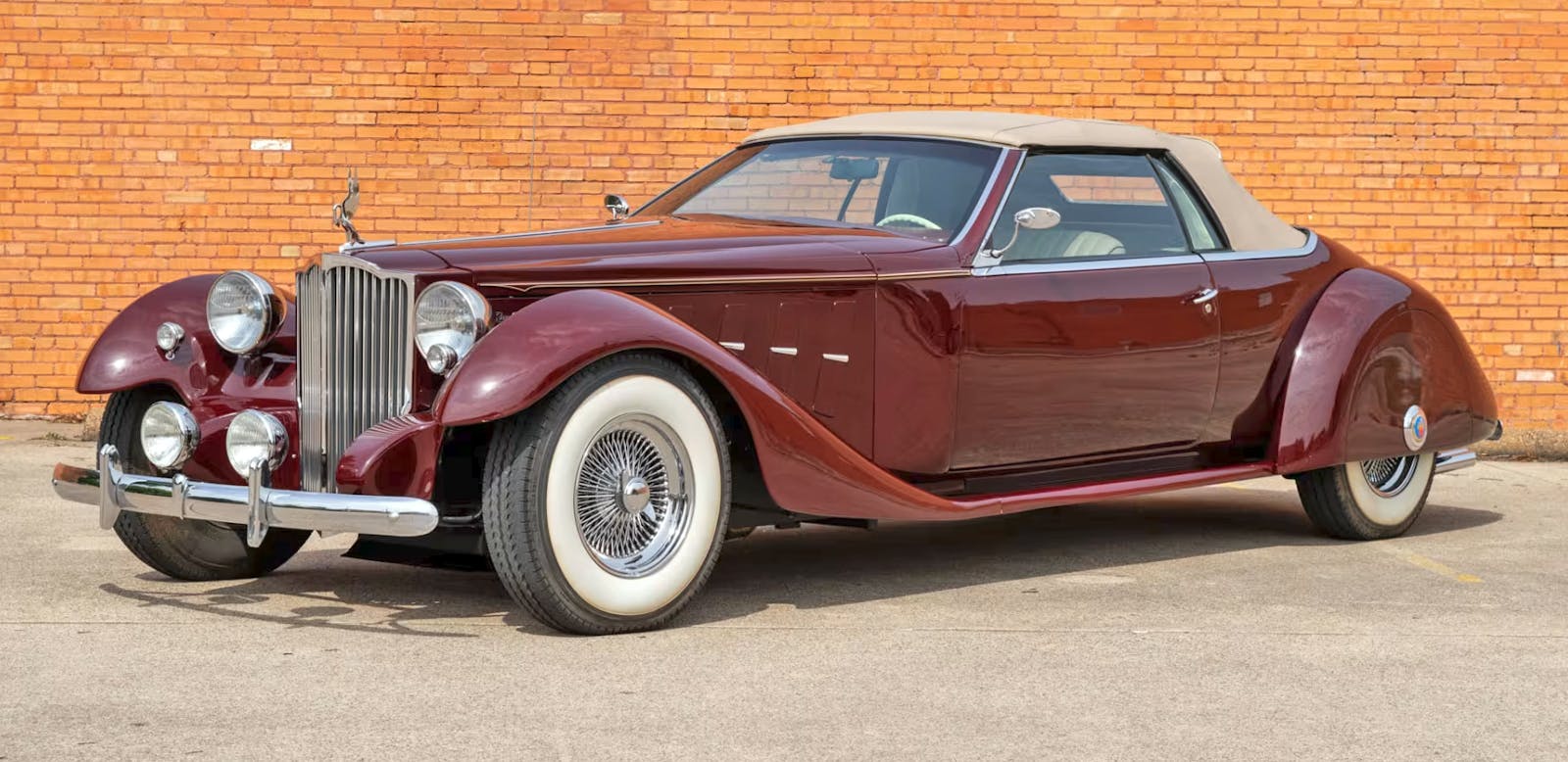Second-Gen Camaro (1970–81): The one that had class
With the Camaro nameplate retiring soon, we’re honoring the beloved two-door with a series of love letters, fun lists, and memories you can follow along with here. Many performance cars, especially nowadays, aim for an anodyne version of perfection that only a few can afford. The Camaro is for the rest of us—and it’s always ready to party. Still, we can’t pretend the car we’re about to celebrate over the next week or so is perfect. That in mind, let down your hair and come with us for a deep dive into what, exactly, makes the second-gen Camaro so bitchin’.
In drag racing, first gear gets you off the line, but second gear wins the race, and everything can come down to how well you execute the shift. By 1970, after just three short model years of the original Camaro, GM was ready to reach for the shifter.
Sketching of the second gen began in 1966, right after the design work wrapped on the first Camaro. This time, Chevy Studio 3 chief Henry Haga and his counterpart at Pontiac, Bill Porter, were determined not to let family-car proportions hamper their work. The second gen was a clean break, with almost no design elements carrying over from the original. Haga’s team drew the cowl so low that GM engineering pushed back, grousing that there was no way to package the car’s heater, air conditioner, radio, and glove compartment within such a compressed space.

According to Chevy historian Michael Lamm, styling chief Bill Mitchell—a full-fledged GM vice president—was called in to settle things. Mitchell backed up his designers, holding that a low cowl was essential to the car’s sporty character and that it shouldn’t rise even a fraction of an inch. The gen-two Camaro thus became the designer’s Camaro.
The 1970 ½ Camaro, so-called because its arrival was delayed by labor unrest, was proportioned to look dramatically lower, longer, and sleeker, with a slipstream roofline and a much sexier stretch from the dash to the front axle, known as the dash-to-axle ratio. This despite the wheelbase and overall construction, a semi-unitized steel architecture with a bolt-on front subframe, remaining conceptually unchanged from the first gen.
For the face, inspiration came from the then-new 1968 Jaguar XJ6 making the auto show rounds, with its prominent rectangular grille bracketed by faired-in headlights and driving lights. A decision to do away with a quarter-window supposedly saved GM $18 per car, money plowed into better cabin insulation including a double-wall roof. However, besides hampering rear visibility, no quarter-window meant excessively long doors, which were better for accessing the rear seats but made a shimmy job out of exiting a Camaro parked in a garage or between cars.
A decision to give Pontiac almost entirely separate sheetmetal for the Firebird, including slightly different doors, likely killed the convertible as well as a proposed two-door wagon. Tooling up such niche spinoffs for both Chevy and Pontiac was deemed prohibitively expensive, so the F-body for the 1970s arrived as a hardtop coupe only, with T-tops arriving as an option in 1978.

Performance, as well as design, was a calling card—at least at first. Hot engines included a 360-hp small-block V-8 and a 396-cubic-inch V-8 with 375 horsepower. At least one equipped with the Chevelle’s famed LS6 454-cubic-inch V-8 roamed GM’s proving grounds.
The “designer’s Camaro” arrived just as sales in the segment were tanking. Inflation was raging, OPEC was rampaging, and GM was facing mounting costs for meeting new safety and emissions regulations. In its first year, the second gen sold barely 50 percent of what the ’69 had sold. A devastating six-month UAW strike at the Camaro’s Norwood, Ohio, plant in 1972 prompted GM to consider killing the F-body outright. Production was halted so long that 1100 partially assembled Camaros and Firebirds collecting dust in the plant had to be scrapped because their 1972 bumpers no longer met 1973 safety standards.

However, the car had friends in high places within GM and ducked the ax. The second-gen carried the Camaro flag on for an astounding 11 years even as competitors ballooned in size and then drastically shrank (Mustang) or disappeared altogether (AMX, Challenger, etc.). Indeed, the F-body survived long enough for the 1977 blockbuster Smokey and the Bandit to inject new life into the segment; the 272,000 sales of the aging 1978 Camaro beat that of any year of the first gen as well as finally—finally!—swamping that of the Mustang.
As in drag racing, the Camaro launched in first, but it won in second.
***
Check out the Hagerty Media homepage so you don’t miss a single story, or better yet, bookmark it. To get our best stories delivered right to your inbox, subscribe to our newsletters.



As someone that owned a 76, I kinda feel like this period should be broken into two. I didn’t consider a circa 70-71 car the same car in any way (I was jealous). There was so much different. Mine was definitely the cheaper of the two
I agree with Isaiah. Although I guess they must have had much the same “bones”, I can’t look at a late ’70s Camaro and relate it to a ’70-’71. I have a pal who has an all-original ’74 and he’s kept it in pristine condition, but as nice as it is, it does nothing to excite me – style-wise or performance-wise.
I didn’t like the early Gen II at first, but it’s grown on me over time. I’d own one given the opportunity. Like most folks, I’d like to find a nice split-bumper coupe in decent shape for bubblegum money…😍
I totally agree. I love the 70-72 and don’t the 73 on.
I consider the 73 on as Gen 3
Gen-3 is usually considered to start in 1982.
Young, single me almost put down some money for a 79 Z28 in black. Sensible me reconsidered when I sat in one then checked out the then-new 79 Mustang. Gasoline was still high in price and the more modern Mustang won me over. I eventually got a good deal on a Cobra fastback with turbo four and TRX suspension.
Those horrid TRX wheels, that was a real fiasco.
The Mustang really came into it own when the fuel injected 5.0 came around the rest were a mess.
I always liked the TRX wheels, at least that style. Our 1984 Mustang GT convertible still has the TRX wheels, and I bought a brand new set of TRX tires for it a few years ago. At one time, we even ran TRX snow tires on the car, and they helped the famously poor-in-winter Mustang 5.0 a LOT.
The early second gens were sweet but the later cars were under powered and the assembly was horrid.
I took a 11,000 mile 82 Camaro to a Camaro show. It only had 11,000 miles V8 and 4 speed.
It look horrible vs the restored cars. This ha orange peel, carpet that did not fit right etc. but that is how it came from the dealer.
We often forget how well these new restored cars can be vs original. We see original so rarely.
Engineers to 2nd gen F-body designers: “You people cannot do these low cowls..”
Third gen F-bodies, which went to an even sleeker windshield angle, have entered the chat.
Look at a side profile of this Camaro and then look at a side profile of a ’53 Studebaker Starliner hardtop.
Yes, it’s uncanny.
Agree with the difference between the earlier & later 2nd-gens – the big bumpers really hurt the appeal for me.
The early cars are among the best GM designs ever, to my eye.
Sorry, but the Camaro hit its peak with the ’69 Z28 and has never recovered. The latest generation was a failed attempt to recreate the glory days. Unlike the latest Mustangs, the styling on current Camaros is just plain ugly.
John I respectfully disagree on late model Camaro/Stang l have had both and my 2019 SS draws more attention than any late mustang. The exception for me is a 2008-9 Shelby GT 500 with KR hood or the Super Snake upgrades
Just because of where and when I grew up, I can’t help having a weakness for mid and late 70’s F-bodies. The same factors make me partial to music from that period, which I also have to acknowledge is, objectively speaking, absolute garbage.
I agree. The early cars and the later cars seem like different cars. Also they seemed to stretch out over time.
Ordered a 70 1/2 RS, sight unseen, as they were just coming out when I returned from Nam. Sold it 18 months and 75,000 miles later for a Porsche Targa. Drove it several times for 24 hours going somewhere and nowhere…just drivin’. A sweet car to get my head back on straight.
Bought a 70-1/2 SS350 with the RS front end package. Ended up with it because I couldn’t afford the insurance on the Z/28 on my Air Force pay. Still was a great looking car, very sophisticated in appearance compared to both the Gen 1 and the later permutations of the Gen 2. After I moved to Denver a guy decided to change lanes without looking and took me into a telephone pole. Totaled.
Those 1970.5 Camaros had a very sleek, European look to them – especially with the full front bumper (not the stunted RS bumpers). While the 1969 was – and remains – a very attractive car, its looks cannot compare to these early gen-2 Camaros.
You can now buy TRX replica wheels that use normal tires. They look great.
In 1981 when everyone was anticipating the new 82 Camaros, a friend bought a brand new 81 Camaro sport coupe, yellow with the rear spoiler, 3.8 liter 229 cubic inch V6 (NOT 231 cubic inch), 3 speed manual. He said he wanted the 81 because it was the classic body style and would be more collectable some day. I thought he was crazy. But, it turns out he was correct.